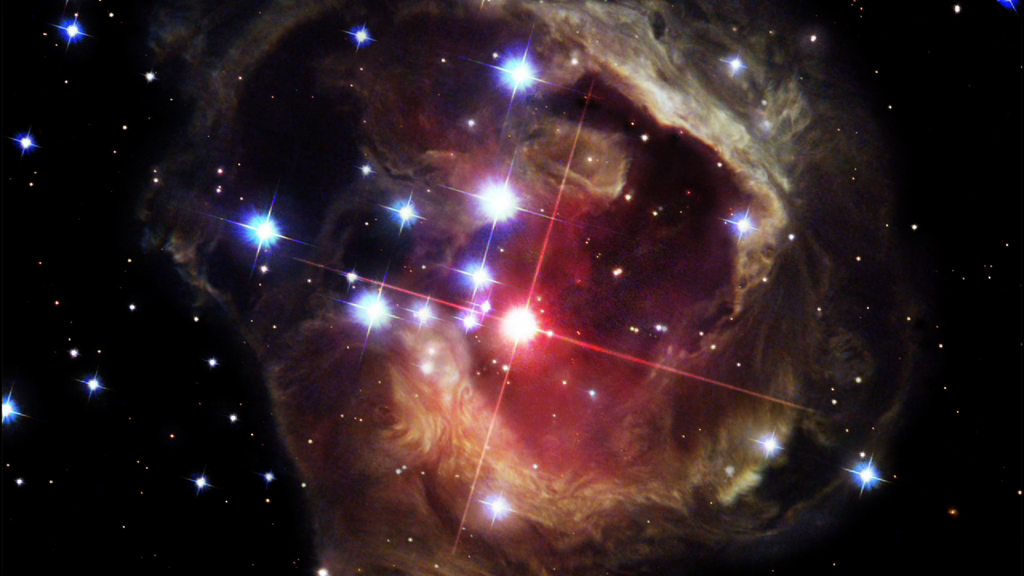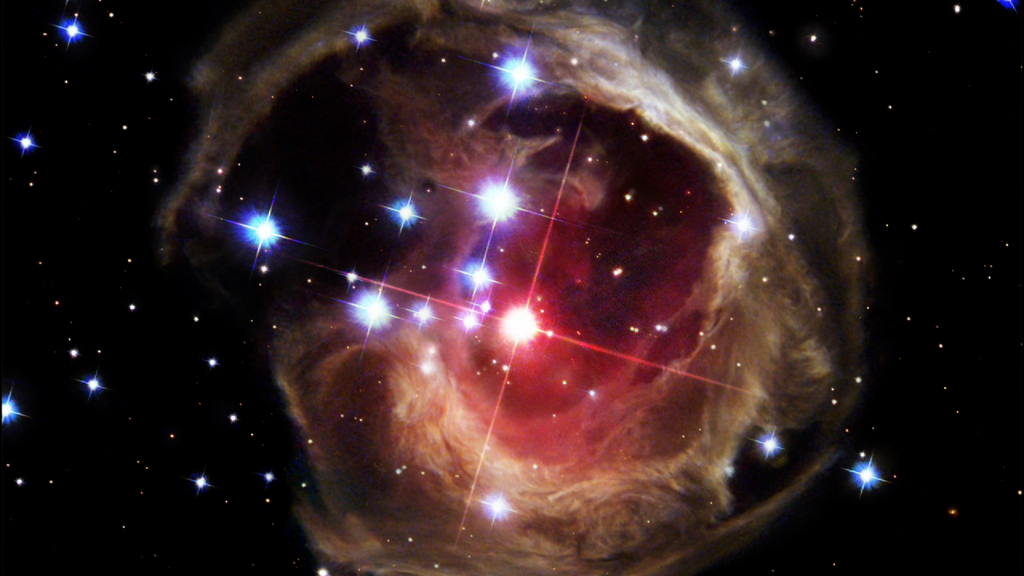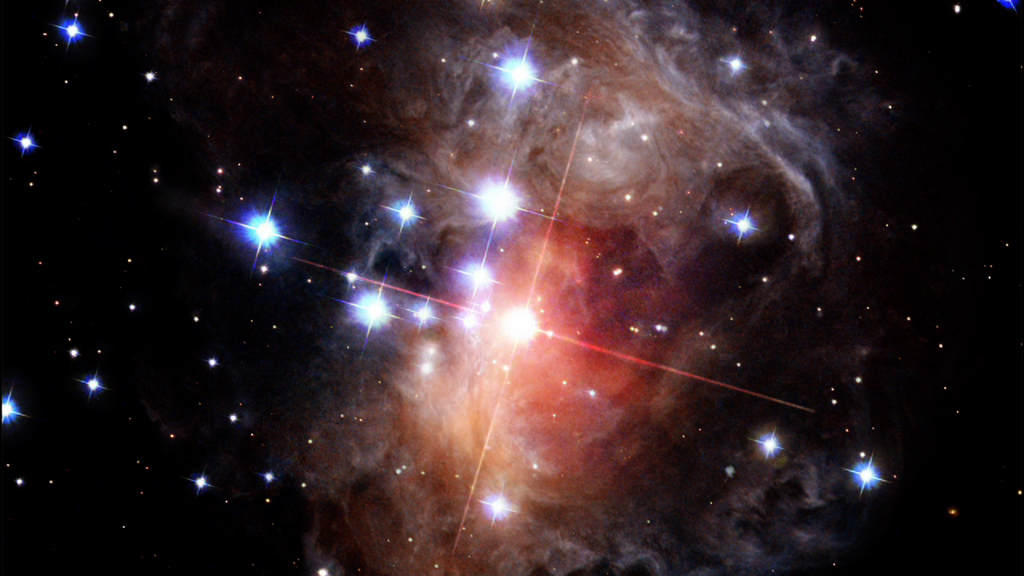Universe
ID: 11233

In 2002 a star named V838 Monocerotis let off a massive explosion, creating a strobe-like flash in the blackness of space. The light was so bright that for a brief time the star outshone every star in the Milky Way galaxy, including our sun. Over months, evidence of the outburst continued to make its way toward Earth, which lies about 20,000 light-years away. As light from the blast rippled outward, some of it reflected off of nearby clouds of interstellar dust producing a phenomenon known as a light echo. In a sequence of images taken in the aftermath of the explosion, a ring of dust appears at first glance to be growing around the star. But this movement is only an illusion—the result of reflected light taking different amounts of time to reach our planet. Watch the video for a view of this event as seen by the Hubble Space Telescope.


Light Echo



Story Credits
Please give credit for this item to:
NASA's Goddard Space Flight Center
Video courtesy of ESA/Hubble
Animation courtesy of NASA/JPL-Caltech
Images courtesy of NASA, ESA
NASA's Goddard Space Flight Center
Video courtesy of ESA/Hubble
Animation courtesy of NASA/JPL-Caltech
Images courtesy of NASA, ESA
Short URL to share this page:
https://svs.gsfc.nasa.gov/11233
Keywords:
SVS >> App
NASA Science >> Universe
https://svs.gsfc.nasa.gov/11233
Keywords:
SVS >> App
NASA Science >> Universe







